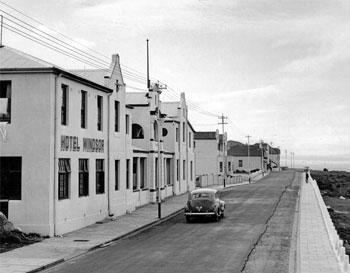The Windsor Hotel was built in 1896 as The Sanatorium
The Windsor Hotel, built as the Sanatorium in 1896 has a long and proud history of 118 years.

She has never closed her doors once. The original core of the building has never been altered. She is the oldest and largest hotel in Hermanus.
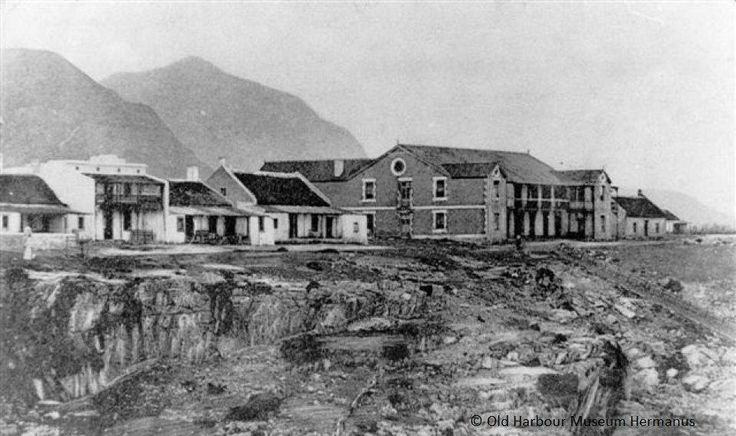
1896
Dr Joshua Hoffman
Dr Joshua and his brother Willem, built The Sanatorium.
They came from a strangely eccentric family. They were described as reclusive and religiously fervent. Their father farmed at Speelmansrivier, Caledon. Around 1875, the Hoffman family made a pact to leave all their possessions to the church until the end of the world. The father Dirk Wouter, his wife, a sister and the nine children, together decided that none of the children would marry and that they would all be buried in a sealed mausoleum on the farm, to share their final resting place. One of the sons, Sebastian Hoffman, broke the pact, moving to the Transvaal to marry. Until 2000 his grandson Pieter leased the former family farm, from the NG Sendingkerk, (Dutch Reformed Mission Church) which inherited the estate.
Dr Joshua, the second youngest son also married. His bride was Maria Smuts, sister of General Jan Smuts (former SA president). General Smuts often stayed at The Sanatorium.
Well, theory and practice, not always working out, Dr Joshua married Maria Smuts, sister of General JC Smuts, and with his brother William, built the original “Sanitorium” on Marine Drive in 1896. In charge of construction, Dr Joshua and William Hoffman employed builder Benjamin Rainford, a well-known stone-mason in Swellendam (having built the D.R. Church) and in Riviersonderend.
They had no children.
Both Dr Joshua and his wife Maria, died in 1923 and were laid to rest in the family vault on the farm.
HISTORY OF THE SANATORIUM
THE BUILDING
It took over a year to construct the original 2-gable sanitorium, built with the typical 500x500x1000 hand-dressed stone block, such as displayed in the Windsor courtyard today. As with structures in those days, they stood for a time “to settle” before receiving plaster: result – not one wall crack in the original Windsor / Sanitorium was found by Basil Clark, who carried out extensive building work between 1981 & 1996.
SANATORIUM
It was originally built as a Sanatorium, for patients requiring heath recuperating holidays. Even in these early days, the air quality and health giving benefits of this air, was recognised by the medical fraternity. Not only patients who came for the healthy air, visited The Sanatorium, but Dr Joshua also encouraged Reverends and Missionaries to come for a rest.
The distinguished Dr Andrew Murray once stayed there. Some of the local teachers, including Swallow Neethling, also made it their home.
Dr Hoffman was one of the early medical doctors in Hermanus. Dr Love & Hoffman had their consulting rooms at The Sanatorium.
The Builder
The hotel was built in 1896 by Benjamin Rainsford, who was commissioned by Dr Joshua Hoffman and his brother, William. Rainsford was a well-known stone-mason from Riviersonderend. After completing The Sanatorium, he decided to stay on in Hermanus.
Two of his sons started Rainsfords - a general store. It was one of the important shops in the Main Road and operated for 30 years. Pick ‘n Pay is now on that site. Benjamin’s daughter married Meester Patterson.
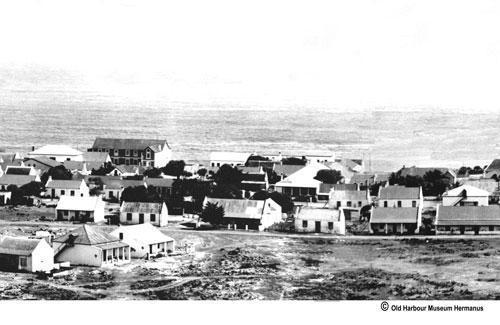
1919
Parker & Kruger
1920
Margaretha Steyn
the succeeding owners to the Hoffman’s are reportedly Parker & Kruger approximately 1919, Margaretha Steyn, 1920 a year later 1931 David Allen (Allengensky) became and owner and who during a burst of activity constructed the west wing with dining room / kitchen and the 50’s bedrooms upstairs, together with the Ravenscroft-photographed entrance arch to Main Road with a bold “Windsor Hotel”.
1931
David Allenzensky
In 1931, David Allenzensky bought the Sanatorium. During a burst of activity, he constructed the west wing. (Dining room/Kitchen, 50’s bedrooms upstairs)
The entrance arch to the Main Road, with a bold ‘Windsor Hotel’, was also built. All this expenditure and outlay reportedly, occasioned by David’s trip to the UK on the Windsor Castle, an mail baot so impressed, that the Windsor name and Hotel title came into being. He changed the name from the Sanatorium to The Windsor Hotel. (He also changed his surname to ‘Allen’)
About the Windsor Castle:
The first RMS Windsor Castle was an ocean liner laid down by the Union-Castle Line for service from the United Kingdom to South Africa. Originally laid down in 1916, their construction was held up by the First World War. They were not completed until 1922. They were the only four-stacked ocean liners built for a route other than the transatlantic. During the thirties, Windsor and Arundel were given refits to make them look more modern. This included reducing their funnels from four to two, and they both were given raked, more modern bows, which slightly increased their length. Also removed were the ships' large gantry-like davits capable of carrying six lifeboats each (like those carried on HMHS Britannic), which were replaced with the much more common Welin davits featured on liners such as RMS Titanic.
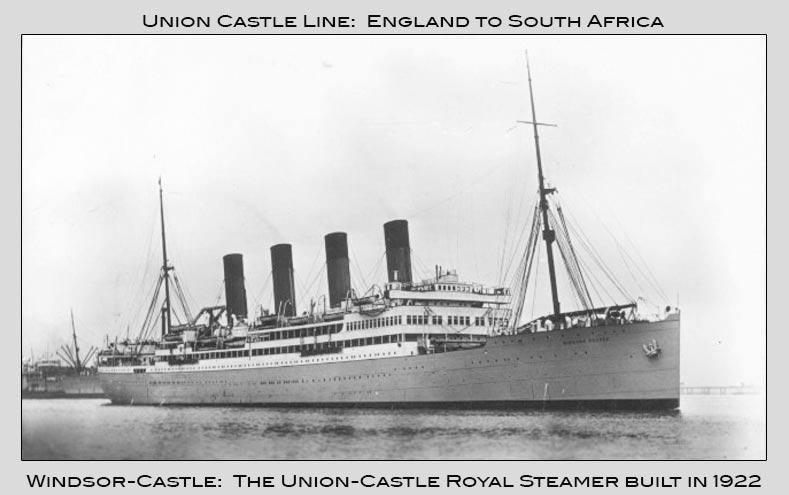
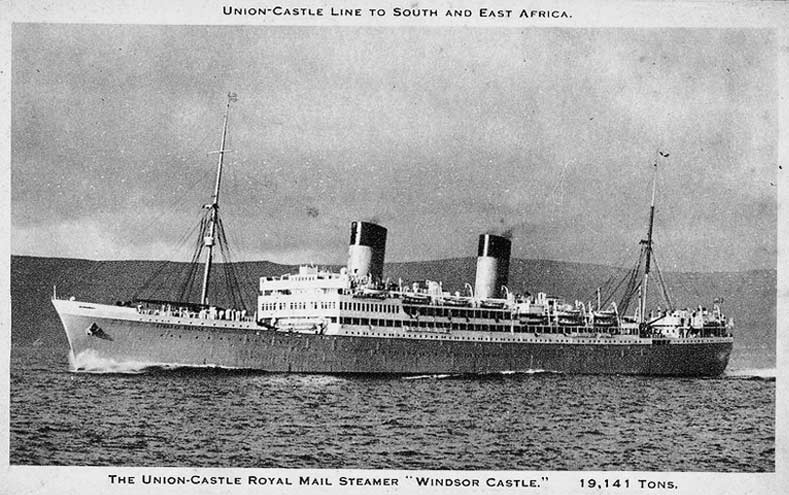
Commissioned as a troop transport in the Second World War, the Windsor Castle was sunk in 1943 by a torpedo launched from a German aircraft while in the Mediterranean Sea as part of convoy KMF-11. She was hit by the torpedo at 2:30 am but did not sink until 5:25 pm, stern first, 110 miles WNW of Algiers, Algeria. Only one crewman, Junior Engineer Officer William Ogilvie Mann, died. 2,699 troops and 289 crew were removed by the destroyers HMS Whaddon, HMS Eggesford, and HMS Douglas.
1940
Alex Luyt
Alex Luyt bought Windsor in 1940, when Hermanus was experiencing one of its hey-days: troop ships in Cape Town and servicemen taken for a drive – Hermanus just within the 100-milie-limit fuel restriction – Voila!
The Hotel was the choice stay of rock anglers, from across the world, for 20 years. Alex Luyt himself represented South Africa in a few angling competitions. The variety of fish found off the Hermanus coast line, was a huge attraction in those days.
1958
Bill & Phil Record
Bill & Phil Record took over custodianship of Windsor in 1958.
They ran it for several years - gaining local support, by Saturday night dances with leading “name” bands from Cape Town, “A Rand for a Rump, or Kreef”- when all the other hotels closed during the quiet times.
He decided to get the support of the local community when other hotels closed their doors during the quiet season. There were few restaurants then and the Windsor became the place to dine out. “A Rand for a rump” was Bill’s eye-catching advert in the Hermanus news - and that rump steak was delicious.
1970
Humberto & Telentino Cordosa
They lived in Ceres, Western Cape and employed managers to run the establishment. After a few bad years, the Hotel was on the market. (on the property market for over 2 years)
1980
Basil & Eve Clark-Brown
In 1980, The Windsor Hotel was bought by Basil Clark-Brown.
His strong determination and will, as well as his ever supporting and committed wife - Mrs Eve Clark-Brown, set about restoring the Windsor to its former glory. The first thing to go, were the heavy velvet curtains, covering the sea-facing snooker room – cutting out the prime asset of the unique sea and whale view. The snooker players were happy to be re-located in an
enlarged new snooker room, adjoining the men’s bar.
Rapid and intense uplift followed. The 15 small bedrooms in the entire old Lady were combined to allow for more spacious rooms, with en-suites. (3 small bedrooms became 1 large en-suite bedroom). The 15 small rooms became 5 large en-suite bedrooms.
Additional buildings were added, including the East Wing. The East Wing is a 3 storey lodge with 54 units. (Sea and mountain facing apartments) The land was previously a parking area.
The entrance to the Windsor was originally from the Main Road. This was changed to the sea-facing side of the Hotel, on Marine Drive The combined refurbishment and new accommodation wing, paved the way for the ‘major change opening’ - end of 1989.
The Hotel was run with a full-service kitchen. Pub lunches and the traditional Sunday lunches were also enjoyed.

Basil and Eve were both involved in marketing and promoting Hermanus.
Being the owner of 4 buildings on Marine Drive, Basil initiated the ‘Hermanus Champagne-Air Kilometre’ - on Marine Drive.
He also started marketing Hermanus as a tourist/holiday destination ‘We are always here to welcome you – always a(WHALE)able’
Eve initiated the World’s first and original ‘whale crier’ Peter Claasen, the local museum cleaner, extended his talents.
They happily walked off (1996), in the safe knowledge that the Windsor was in the capable and experienced hands of the new owner – their eldest son, Garth Clark-Brown. This after 15 years of ownership, a new 54 unit seafront extension, plus the original re-furbished 15 room/suite hotel, refurbished kitchen with walk-in deep freeze, 2 bars, dining room, lounges, conference rooms, hall and laundry.
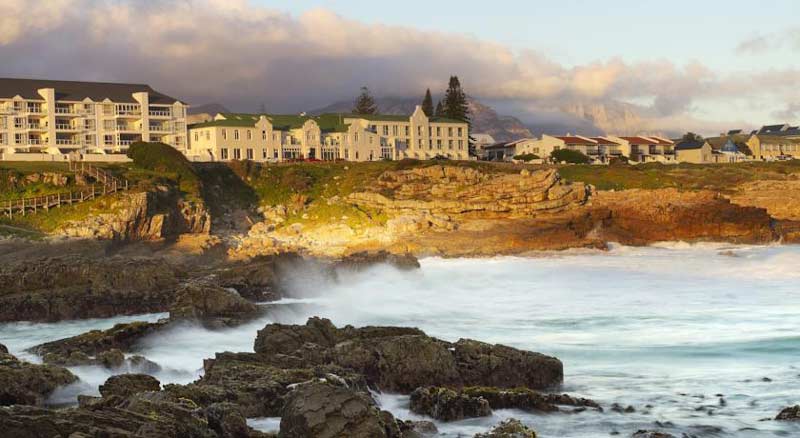
1995
Garth Clark-Brown
In 2005, Garth purchased the Main Rd premises (previously Boland/BOE Bank)
The building was converted into a separate office block, with 10 additional courtyard suits. Garth & Trish closed the full kitchen service, as the number of eating outlets increased to over 80.
They concentrate on producing the best-value breakfast in Hermanus and out-source any other food, which may be required for conferences and functions.
Under current ownership and watchful eye of Garth, The Windsor Hotel continues their traditional hospitality. Stylish waterfront living, with all the comforts you expect.
Source
P.J. Luyt Album
S.J du Toit
Basil Clark Brown
Old Harbour Museum
Windsor Hotel management
Call us and schedule your listing today! Contact Us
Copyright © 2025 Hermanus Online Magazine. Web Development by Jaydee media.

